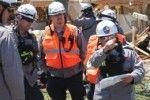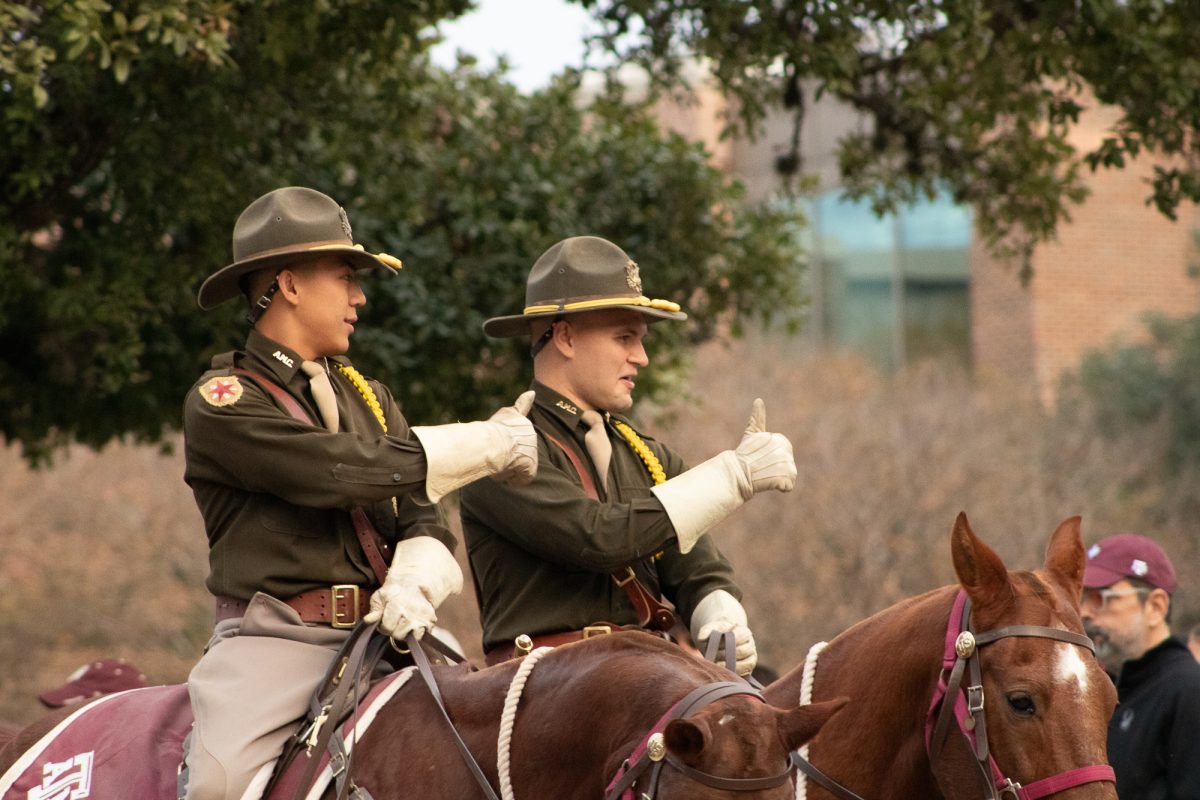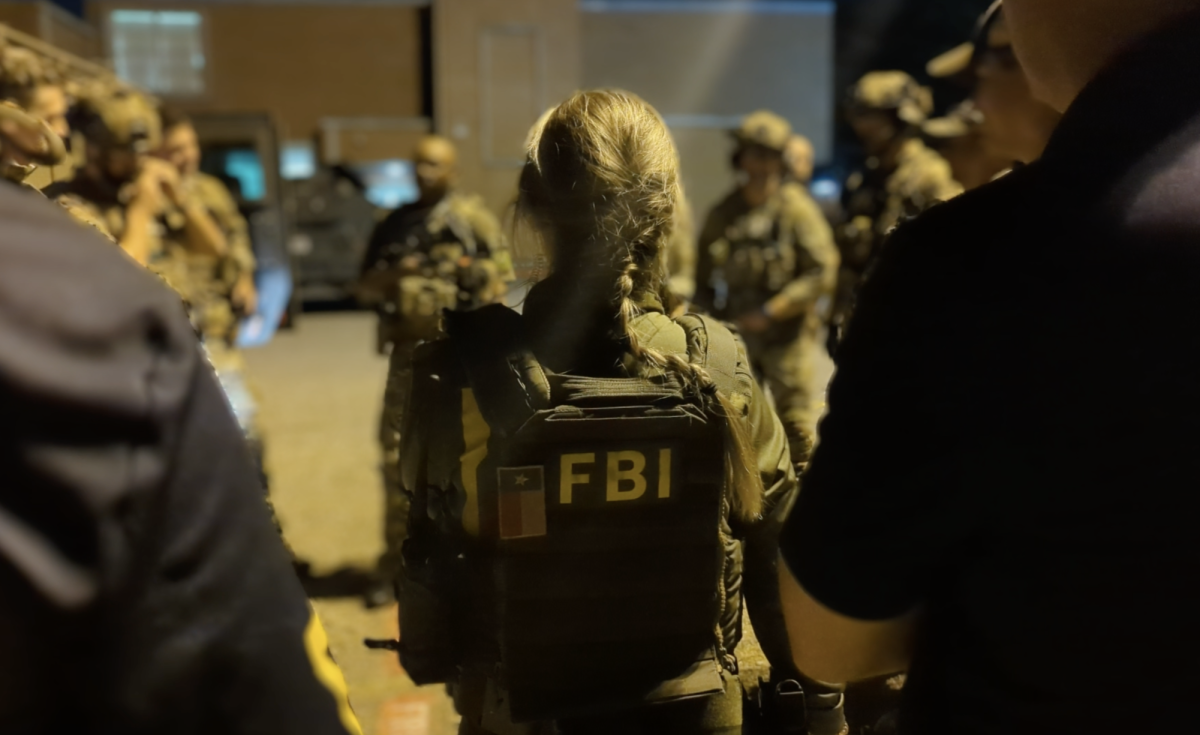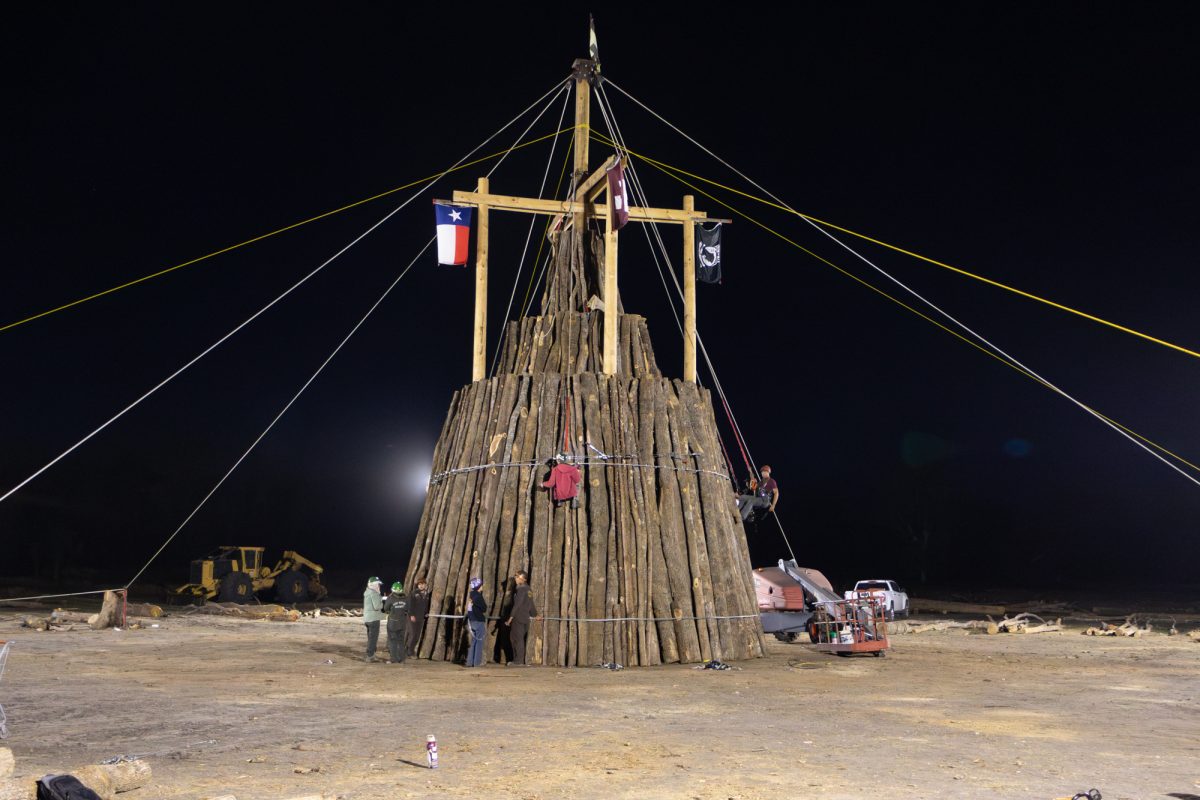Even amid the debris and destruction of disasters created by the forces of nature and sometimes the hands of men, a team of responders at Texas A&M
provides assistance and hope at a moment’s notice.
Texas Task Force 1 is an urban search and rescue response system, which operates out of College Station and deploys in response to disasters such as the 9/11 attacks, Hurricane Katrina and, more recently, the West fertilizer plant explosion and the tornado that struck Moore, Okla. Composed almost exclusively of trained volunteers, this team provides support and relief across the state and country in times of need.
Jeff Saunders, operations chief for Texas Task Force 1, said members of the team are prepared for all hazards they are presented with.
“We are a search and rescue, almost all hazard search and rescue team,” Saunders said. “We do structural collapse, we do water rescue, and we, do what we term ‘wide-area search at this point – like a tornado where it’s just devastation for miles and miles
and miles.”
The team is not only a state asset, but also a federal asset. Will Welch, communications manager for the Texas A&M Engineering Extension Service (TEEX), said the team functions as one of 28 urban search and rescue teams
affiliated with the Federal Emergency
Management Agency throughout the country.
“There’s two different ways we can deploy,” Welch said. “If it is a federal disaster such as Moore, Okla., then FEMA will request deployment through the Texas governor’s office. If it is a state disaster, then the Texas Division of Emergency Management will ask us to come out.”
The task force operates under TEEX, which functions as a training entity for responders across the country. Programs for firemen, police and emergency medical responders can be found in College Station, as well as programs that travel across the nation. Welch said these programs provide education that is essential for the safety of the country, including such incidences as the Boston marathon bombing.
“We operated a class three times in the Boston area that was a mass casualty bombing incident course of how to handle those sort of things,” Welch said. “It was the whole operational scene of ‘How do you handle mass casualties, how do you triage, how do you operate,’ things like that. It was delivered three times in Boston before the Boston Marathon bombing. It’s training that TEEX provides to the country that’s just vital.”
The task force is an integral product of TEEX. A total of 680 people, the majority of whom assist on a purely volunteer basis, comprise the force. The members of the force are divided into three teams and must live within five hours of College Station. Only about 10 percent of those who apply to the task force are accepted, and Saunders said members of the team are dedicated and skilled.
“The average person that applies for this team has 8 to 10 years of some type of emergency experience, usually working for a fire department,” Saunders said. “Not all of our members are fire based. Probably 10 to 15 percent are from other professions – lawyers, doctors, engineers, some of our technical information specialists are IT people or planning people in their jobs.”
Members of the team must train year round to be prepared to deploy at any time. Saunders said the task force has completed 27,000 hours of training in the last year.
Supplies are also necessary to maintain the teams that are deployed. A warehouse containing everything the team needs to be completely self-sustained for up to 72 hours is ready to move at any moment, Welch said.
“Every single minute of every single day, all of this is ready to go out the door in support,” Welch said. “Everything you see loaded on these trucks is pulled off four times a year, checked, re-checked, certified by military quartermasters as well in case the team needed to fly someplace on military transports.”
Saunders said the teams are deployed an average of six to eight times each year. The Moore tornado disaster was the 92nd time the force has been deployed since 1997.
Chuck Jones, deputy operations chief for Texas Task Force 1 and a leader of one of its three teams, said one of the biggest impacts the force had was providing skilled relief for the first responders. The task force often appears on scene 15 to 20 hours after a disaster and function as second-wave relief.
“Those first responders that are working nonstop – running, lifting, moving, constantly for 20 hours. They’re exhausted,” Jones said. “They have nothing left. Their gas tank is empty. For the next wave of help to come in and arrive and for them to know that they have the specific training and knowledge and abilities to come in and take over and keep working in the same fashion that they were, that’s comforting for them.”
Welch said the relief provided by the task force can be uplifting for not only exhausted first responders, but also for members of the general community.
“Certainly the on-the-scene folks, the local jurisdiction that was there, they go to the end of their rope,” Welch said. “To come and help them, it lifts them up and I think it helps the community, letting them know that they’re not alone.”
A week after the explosion in West, the task force was deployed for the second time to West on a humanitarian mission to help residents of the town retrieve personal belongings from houses and apartments affected by the blast. Jones said members of the task force are not often able to interact with the people they assist, yet this second deployment offered members a chance to interact with the people they had helped rescue only a week before.
“On most cases [it’s], ‘What’s your name, what’s your address, how many people are in your family, get in this ambulance and go,’ and we never see them again,” Jones said. “Well, this was an opportunity for our personnel to actually get to talk to the people and find out how they were affected by this.”
The mission allowed the members of the task force to form a connection with the victims of the disaster, Jones said. Not only did the residents of West seem very thankful for the presence of the responders, he said, but it offered the task force an opportunity to see the impact of their work.
“I think the thing that the Task Force members took away from that was the value of being able to actually talk to those victims, to have their input on what they saw, how they felt, and to use that information in how they respond in the future,” Jones said.
Task Force 1
June 3, 2013

0
Donate to The Battalion
$70
$2500
Contributed
Our Goal
Your donation will support the student journalists of Texas A&M University - College Station. Your contribution will allow us to purchase equipment and cover our annual website hosting costs, in addition to paying freelance staffers for their work, travel costs for coverage and more!
More to Discover









